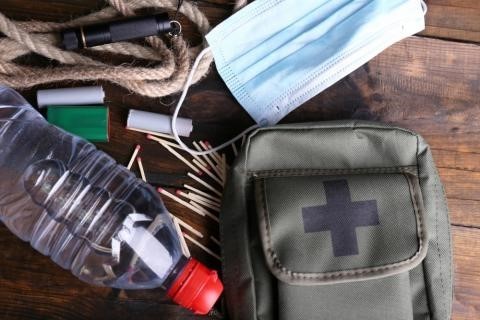As intense wildfires continue to spread across western Canada, multiple communities have been subject to evacuation orders. Experts are warning that this summer’s wildfire season is expected to be particularly severe due to hot, dry weather conditions. Recent wildfires in Alberta, British Columbia, and Manitoba have prompted thousands of residents to evacuate their homes. Prime Minister Justin Trudeau has emphasized the importance of being prepared for wildfires as global temperatures continue to rise.
Before receiving an evacuation order or alert, it is crucial to be familiar with the terms and actions associated with each. An evacuation order requires residents to leave their homes immediately, while an alert signifies a potential threat and the need to be ready to leave at short notice. Emergency and disaster management expert Jack Rozdilsky emphasizes the three-part “cycle” of preparation: before, during, and after an evacuation. This includes staying informed through local news sources and social media, creating an evacuation plan, and knowing how to dress and what essentials to bring.
Preparing for an evacuation involves having a checklist in place and knowing where to go, how to get there, and what to bring. Proper clothing and gear, such as long pants, sturdy footwear, and a flashlight for visibility through smoke, are essential. It is advised to have a backpack with basic belongings, including medications, cell phones, and water, packed and ready to go. Before driving during a wildfire evacuation, ensuring the vehicle’s tank is at least half full and avoiding downed power lines are important safety precautions.
Specific guidelines for evacuation orders and alerts may vary by province or territory, but having a general idea of where to go, such as staying with family, friends, or at a public evacuation center, is crucial. Remaining calm during an evacuation is essential to making sound decisions in a high-stress situation. After being evacuated, it is important not to return home until receiving clearance from emergency officials. The Canadian Red Cross advises on safety precautions to take when cleaning up after a wildfire, including wearing protective gear and contacting local authorities for temporary housing or disaster financial assistance.
In the event of a wildfire evacuation, it is important to be prepared and informed on how to react. Jack Rozdilsky encourages Canadians to stay updated on local news and emergency alerts, have an evacuation plan in place, and be ready to leave at a moment’s notice. Proper clothing, essential items, and a well-prepared vehicle are crucial in ensuring safety during an evacuation. By following evacuation orders and guidelines, staying calm, and taking necessary precautions when returning home after a wildfire, individuals can mitigate risks and ensure their well-being during natural disasters.


